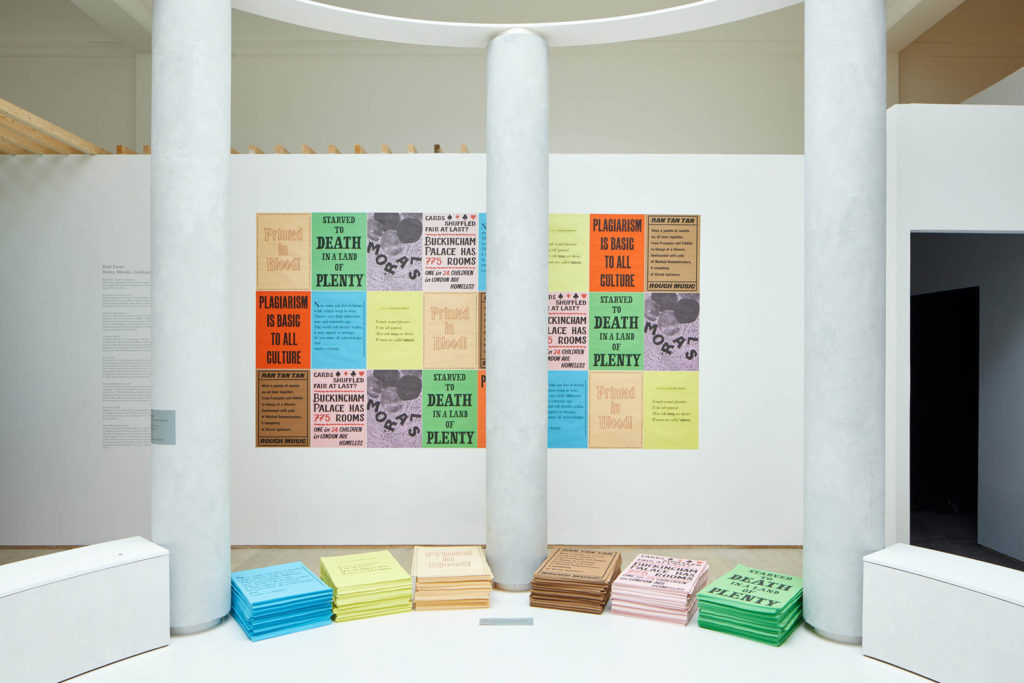
Rocks, Morals, Quicksand 2020, series of 8 posters created with typographer Edwin Pickstone with signwriting by Erin Bradley-Scott
Commissioned as part of ‘Hogarth: London Voices, London Lives’ at Pitzhanger, London. The exhibition saw the return of ‘A Rake’s Progress’ series of paintings by Hogarth to Pitzhanger Manor and Gallery displayed alongside contemporary works by Faisal Abdu’Allah, James Fritz, Oliver Payne & Nick Relph and John Riddy. ‘Rocks, Morals, Quicksand’ is a series of eight A2 posters, available for free from the exhibition. The posters draw on found texts from a wide range of historic sources to reveal hidden and lesser know narratives within Hogarth’s original series.
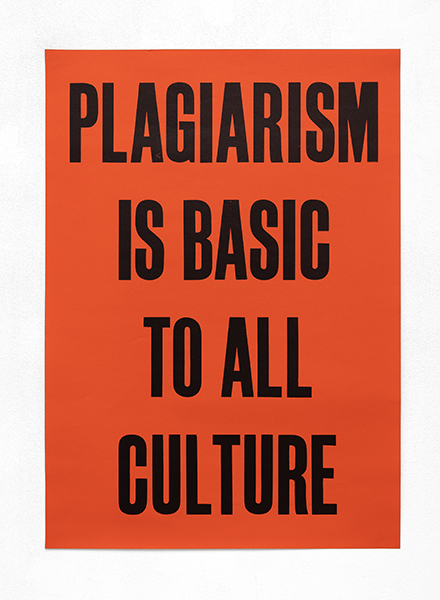
1. PLAGIARISM IS BASIC TO ALL CULTURE
Pete Seeger quoting his father Charles Seeger, ‘Pete Seeger & Arlo Guthrie Together In Concert’ Reprise Records, 1975.
Hogarth painted ‘A Rake’s Progress’ as a means to fund the series of engravings by the same name. The series prompted the Engraving Copyright Act of 1734, one of the first copyright laws otherwise known as ‘Hogarth’s Act’. Produced with typographer Edwin Pickstone it quotes folk singer Pete Seeger quoting his father, the musicologist Charles Seeger.
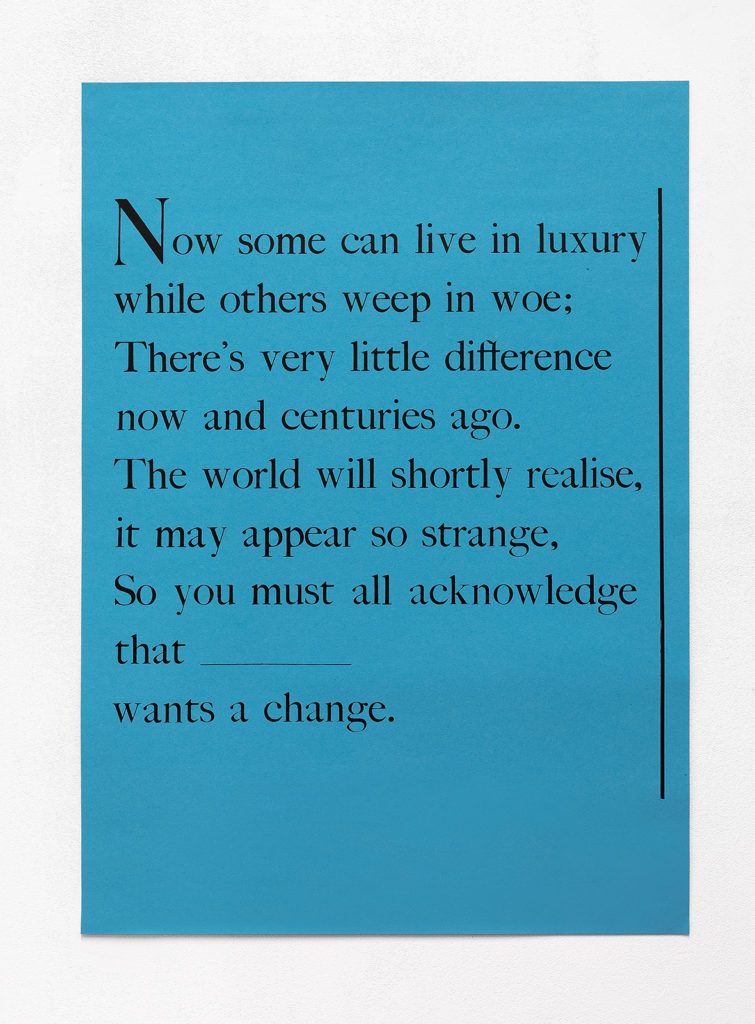
This poster features an adapted verse from ‘The State of Great Britain or A Touch at the Times’, a 19th century broadside ballad printed by Hodges, Seven Dials, London (Crawford Collection, National Libraries of Scotland). The original verse includes the word ‘England’ in the black space but I decided to remove this, as many traditional broadsides often did to conceal a name, in this case so the owner could write in their own desire, a place name or their own name. I chose this verse as it has so much resonance still today. Hogarth frequently included ballad sellers in his work, often depicted as pregnant women, some academics believe he used the pregnant ballad seller as a metaphor for the printing press, viewing the uterus as a machine capable of replication.
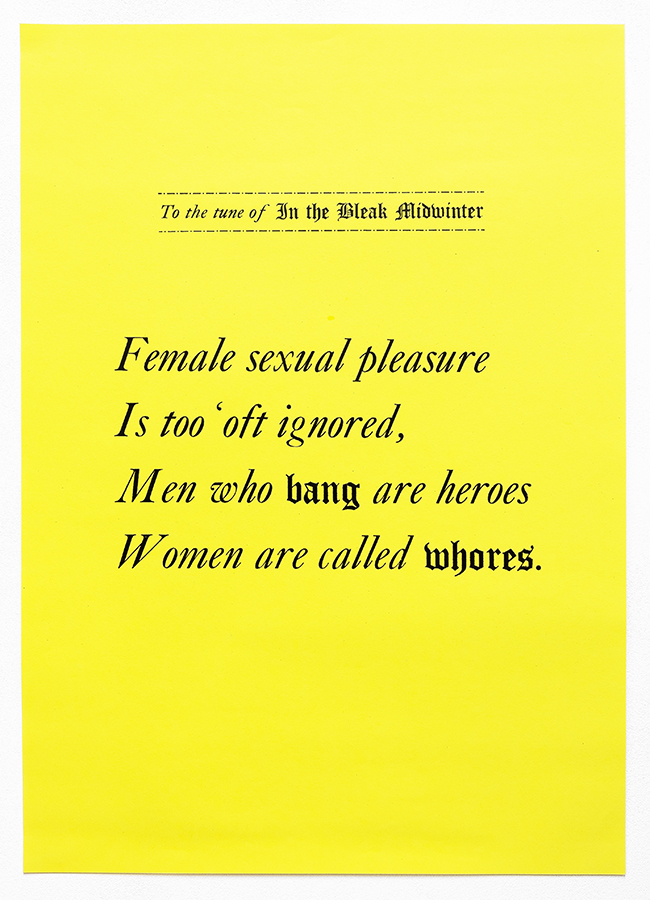
Hogarth’s third image in the series shows Tom, the Rake, in a London brothel. So much discussion and study of the series focuses on him as the protagonist but I wanted to shift attention to other people, particularly the women represented.
This poster features a verse from the song ‘Female Sexual Pleasure’ (to the tune of ‘In the Bleak Midwinter’ by Goldstein Music, 2017 from the album ‘HYRRS: Festive Hymns Made Feminist’ created to raise money for domestic abuse survivors charity Refuge. I including the song in my project a ‘A Feminist Jukebox of People Trying to Change the World’ 2018 and the verse has been stuck in my head since
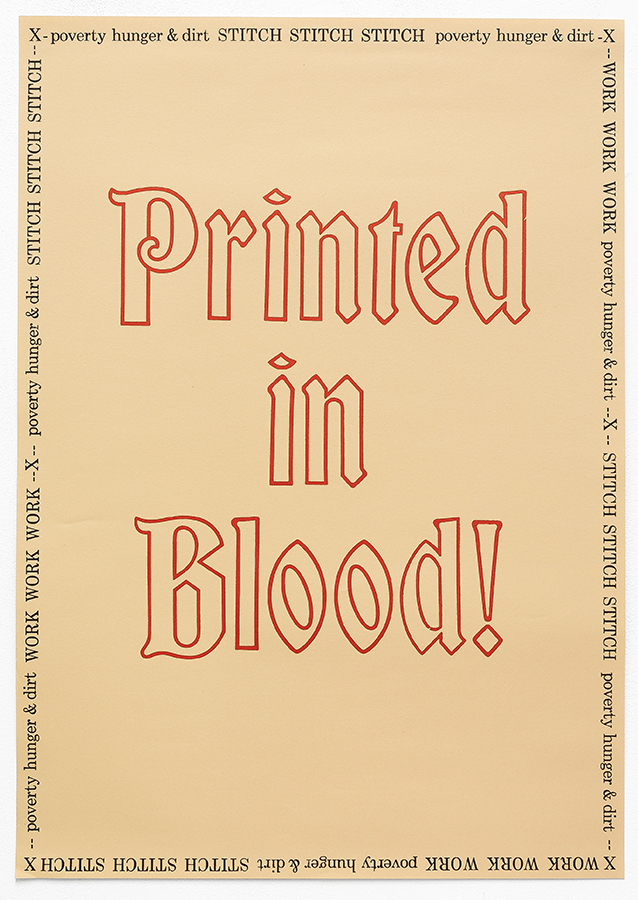
Hogarth’s fourth image in the series shows Tom, the Rake, narrowly escaping arrest by bailiffs. The debt collectors are paid off by Sarah Young, his former pregnant lover he abandoned. Sarah earns her money as a seamstress.
Produced with typographer Edwin Pickstone poster no 4 quotes words from ‘Killing, no Murder’ a temperance ballad printed by William Tweedie, London c.1866 (British Library, Ballads and Broadsides Collection), surround by text extracted from ‘The Song of the Shirt’, a poem by Thomas Hood first published in Punch 1843 which drew attention to the conditions of working class women.
With fingers weary and worn,
With eyelids heavy and red,
A Woman sat, in unwomanly rags,
Plying her needle and thread—
Stitch! stitch! stitch!
In poverty, hunger, and dirt,
And still with the voice of dolorous pitch
She sang the "Song of the Shirt!"
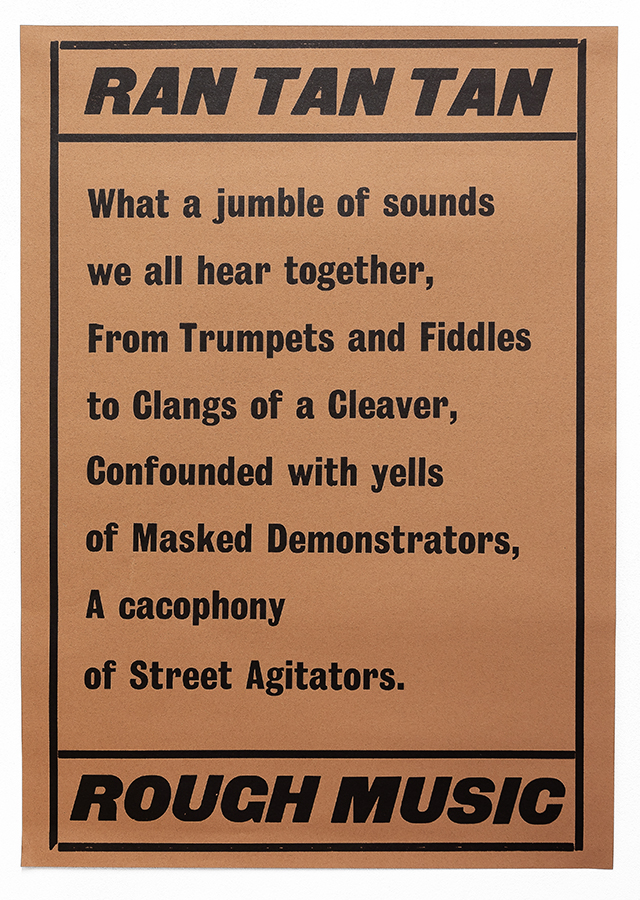
Hogarth’s fifth image in the series shows Tom marrying an older rich woman to alleviate his debt. Sarah appears at the door of the church with their child. Poster no 5 features a description of the folk custom known as rough music, skimmington, ran tan tan, charivari and other variations. Popular throughout Europe and North America, rough music was a historic ritualistic form of public of noise making and from of humiliation and shaming used to express violation of community norms such as adulterous relationships, contentious marriages (such as Tom’s) or inappropriate behaviours.
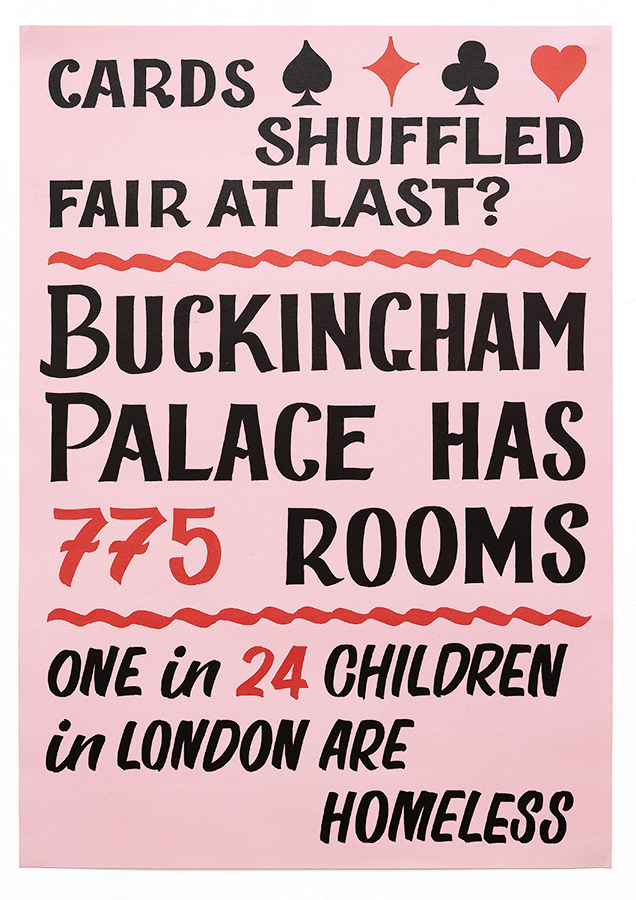
Hogarth’s sixth image in the series shows Tom, the Rake, gambling away his new wife’s fortune in a club in Soho. Produced with sign writer Erin Bradley Scott poster no 6 merges words from the broadside ‘Bob Booty’s Lost Deal or The Cards Shuffled Fair at Last’ (printed by John Jones 1742, British Library, Ballads and Broadsides Collection) with and a 20th century campaign poster from Museum of London archives with statistics from the housing charity Shelter (2019) on homelessness in London.
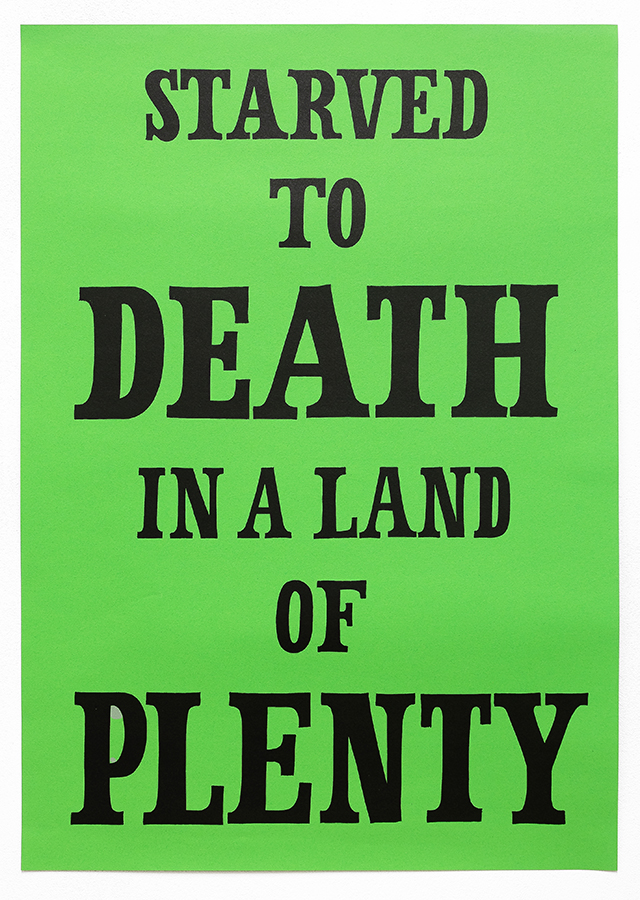
Hogarth’s seventh image in the series shows Tom, the Rake, destitute and incarcerated in debtors’ prison where he begins to lose his mind. Produced with sign writer Erin Bradley Scott poster no 7 features text from a placard displayed at an unemployed workers protest in Trafalgar Square, London 1908.
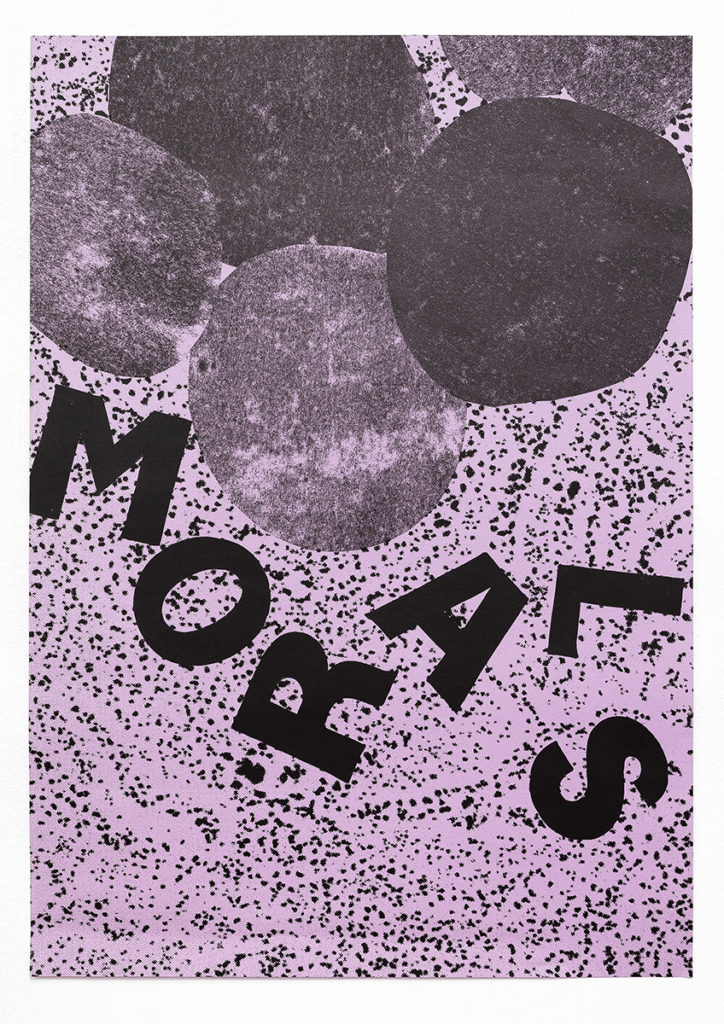
Hogarth’s eight image in the series shows Tom, the Rake, in Bedlam, London’s infamous mental asylum where wealthy women gaze on at the patients for entertainment. This final poster in the series shows the Rocks Morals Quicksand of the title. It was inspired by the preface to ‘Anecdotes of William Hogarth: Written by Himself’ 1833. ‘The first commentator was Dr. Truslet, who was assisted by Mrs Hogarth. The Doctor’s object was to present the reader with concise and comprehensive explanations of the moral tendancy of Hogarth’s works; and to excite in young persons a just dread of the rocks and quicksands of life.’